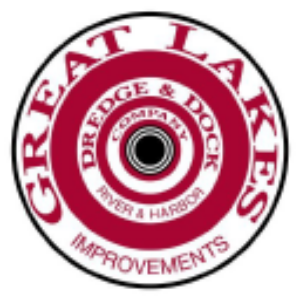Great Lakes Dredge & Dock Announces Receipt of $92.5 Million Houston Ship Channel Widening and Improvement Project 11 Award
Great Lakes Dredge & Dock (GLDD) has secured a $92.5 million contract for the Houston Ship Channel Widening Project 11, which is part of a billion-dollar expansion initiative. Dredging operations are set to begin in Q1 2022, and completion is expected by Q4 2022. The project involves widening 11½ miles of the channel to accommodate larger vessels and will enhance environmental efforts by creating a new island for wildlife. The company is also investing $4.5 million to upgrade equipment to reduce emissions, showcasing its commitment to environmental sustainability.
- Secured a $92.5 million contract for the Houston Ship Channel project.
- Project expected to enhance the Port of Houston's capacity for larger vessels.
- Investment of $4.5 million in emissions-reducing technology demonstrates commitment to sustainability.
- None.
Insights
Analyzing...
HOUSTON, Nov. 22, 2021 (GLOBE NEWSWIRE) -- Great Lakes Dredge & Dock Corporation (“Great Lakes Dredge & Dock” or the “Company”) (NASDAQ: GLDD), the largest provider of dredging services in the United States announced today the signing of a
Project 11 is an ambitious plan to widen the 52- mile Houston Ship Channel which winds from the Gulf of Mexico through shallow Galveston Bay and up through the port. Great Lakes Dredge & Dock’s awarded work entails the dredging of 11½-miles of the channel, widening a major portion of the Galveston Bay reach from 530 to 700 feet. The Port of Houston is the nation’s largest waterborne tonnage port and a major container gateway for Texas and millions of people who live in neighboring areas. This project will allow for larger container and petrochemical ships to more safely and efficiently navigate the Houston Ship Channel to access the Port of Houston. In addition to widening the channel, Great Lakes Dredge & Dock will pump 1.6 million cubic yards of dredged material to beneficially construct a new island for bird habitat and oyster mitigation.
In the evaluation of proposals, Port of Houston placed significant value on the dredging equipment’s total emissions of nitrogen oxide (“NOx”) while performing the contract. David Simonelli, Chief Operating Officer commented, “Great Lakes Dredge & Dock is investing
Lasse Petterson, President and Chief Executive Officer of Great Lakes Dredge & Dock commented, “We are very pleased to have won this first contract within a year of relocating and becoming a Houston based contractor. The RFP tendering process involved an extensive evaluation of the competing contractors’ past port deepening experience, execution methods, equipment capabilities, environmental mitigation and safe work methods in addition to price. We thank the Port of Houston for the award of this important contract and are pleased to add this work to our extensive list of port deepening projects. We believe this important project will deliver long standing benefits to the local economy and local workers. We look forward to begin dredging operations and executing this project safely, on time and within budget.”
The Company
Great Lakes Dredge & Dock Corporation (“Great Lakes Dredge & Dock” or the “Company”) is the largest provider of dredging services in the United States. In addition, the Company has a long history of performing significant international projects. The Company employs experienced civil, ocean and mechanical engineering staff in its estimating, production and project management functions. In its over 130-year history, the Company has never failed to complete a marine project. Great Lakes owns and operates the largest and most diverse fleet in the U.S. dredging industry, comprising over 200 specialized vessels. Great Lakes has a disciplined training program for engineers that ensures experienced-based performance as they advance through Company operations. The Company’s Incident-and Injury-Free® (IIF®) safety management program is integrated into all aspects of the Company’s culture. The Company’s commitment to the IIF® culture promotes a work environment where employee safety is paramount.
Cautionary Note Regarding Forward-Looking Statements
Certain statements in this press release may constitute "forward-looking" statements as defined in Section 21E of the Securities Exchange Act of 1934 (the "Exchange Act"), the Private Securities Litigation Reform Act of 1995 (the "PSLRA") or in releases made by the Securities and Exchange Commission (the "SEC"), all as may be amended from time to time. Such forward-looking statements involve known and unknown risks, uncertainties and other important factors that could cause the actual results, performance or achievements of Great Lakes and its subsidiaries, or industry results, to differ materially from any future results, performance or achievements expressed or implied by such forward-looking statements. Statements that are not historical fact are forward-looking statements. These cautionary statements are being made pursuant to the Exchange Act and the PSLRA with the intention of obtaining the benefits of the "safe harbor" provisions of such laws. Great Lakes cautions investors that any forward-looking statements made by Great Lakes are not guarantees or indicative of future events.
Although Great Lakes believes that its plans, intentions and expectations reflected in this press release are reasonable, actual events could differ materially. The forward-looking statements contained in this press release are made only as of the date hereof and Great Lakes does not have or undertake any obligation to update or revise any forward-looking statements whether as a result of new information, subsequent events or otherwise, unless otherwise required by law.
For further information contact:
Tina Baginskis
Director, Investor Relations
630-574-3024








